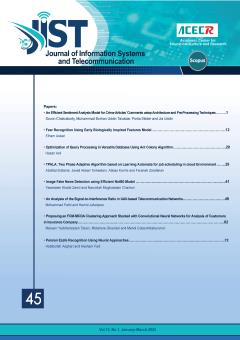Device to device (D2D) underlying massive MIMO cellular network is a robust deployment which enables network to enhance its throughput. It also improves services and applications for the proximity-based wireless communication. However, an important challenge in such dep
More
Device to device (D2D) underlying massive MIMO cellular network is a robust deployment which enables network to enhance its throughput. It also improves services and applications for the proximity-based wireless communication. However, an important challenge in such deployment is mutual interference. Interference, in the uplink spectrum, reusing the same resource with cellular user, is caused by D2D users. In this paper, we study a distributed power control (DPC) algorithm, using minimum mean square error (MMSE) filter in receiver, to mitigate the produced interference in this deployment scenario. For the DPC algorithm, employing the coverage probability of D2D links, an optimal power control approach is proposed, which maximizes the spectral efficiency of D2D links. Using this modeling approach, it is possible to derive closed-form analytical expressions for the coverage probabilities and ergodic spectral efficiency, which give insight into how the various network parameters interact and affect the link. Also, the DPC algorithm is modeled by stochastic geometry and receiver filter is designed by estimation theory that a new structure in this robust network is an approach to improve spectral efficiency. Simulation results illustrate enhancing coverage probability performance of D2D links in term of the target (signal to interference ratio) SIR with respect to different receiver filter and other parameters which are existing in D2D links.
Manuscript profile


